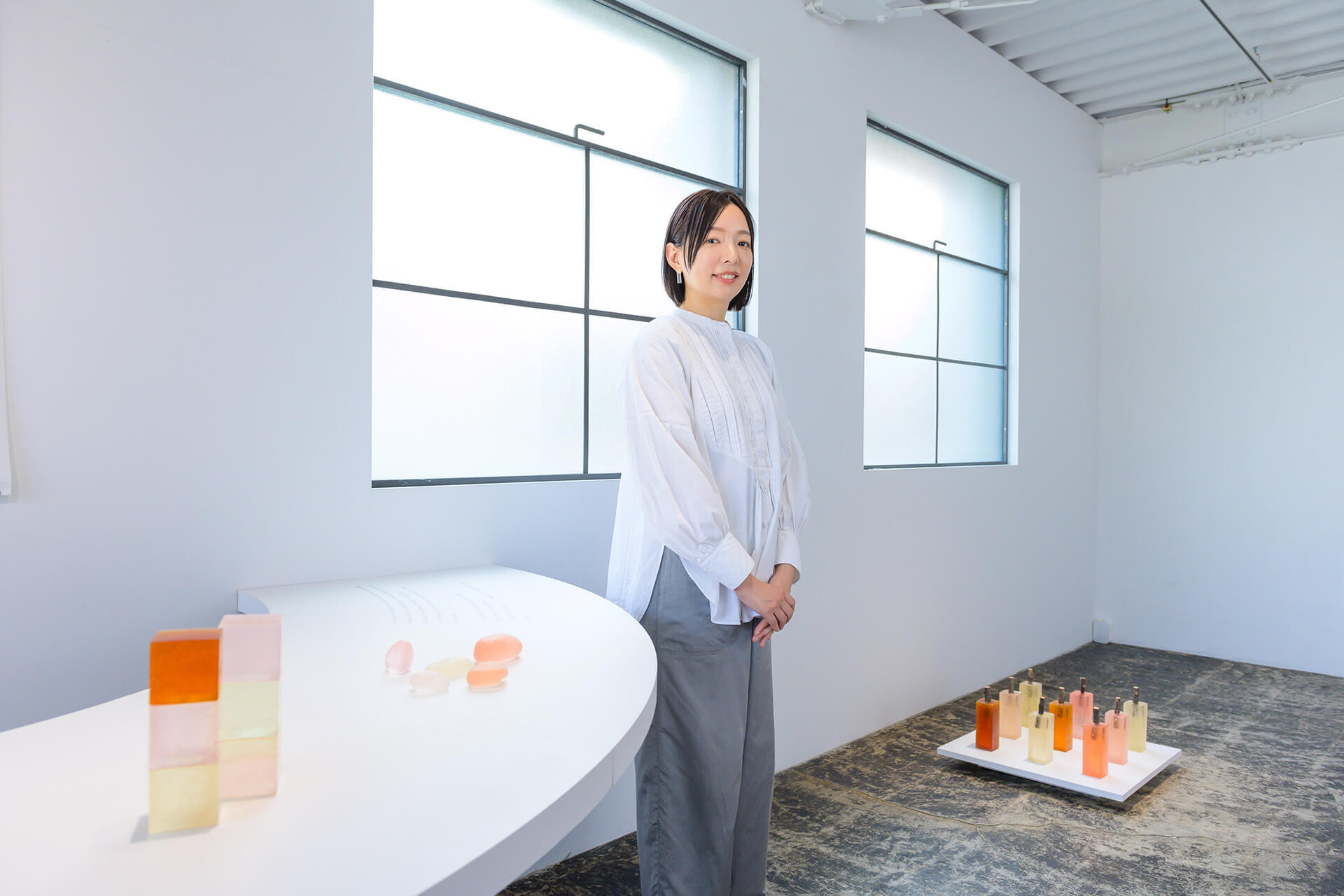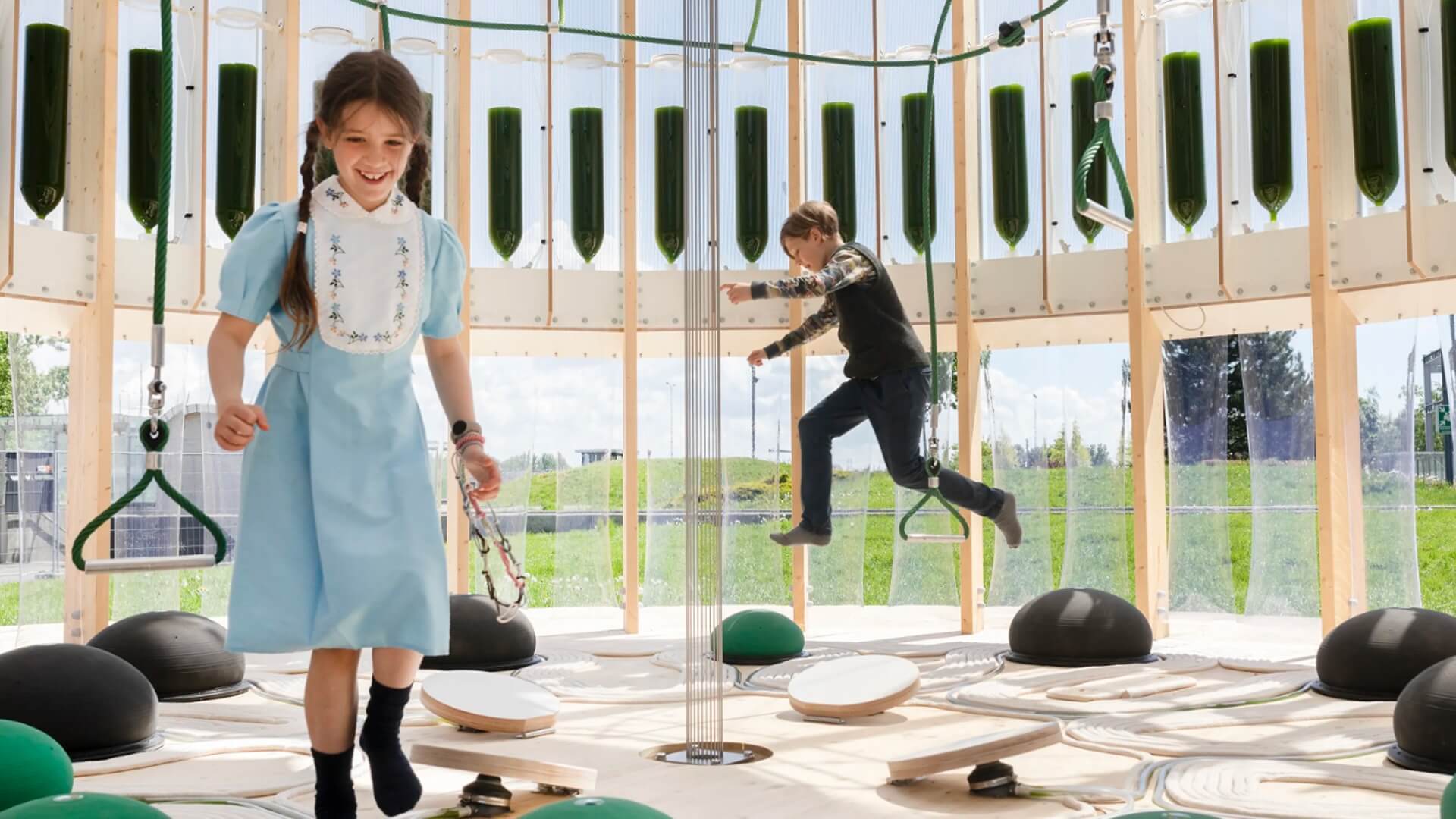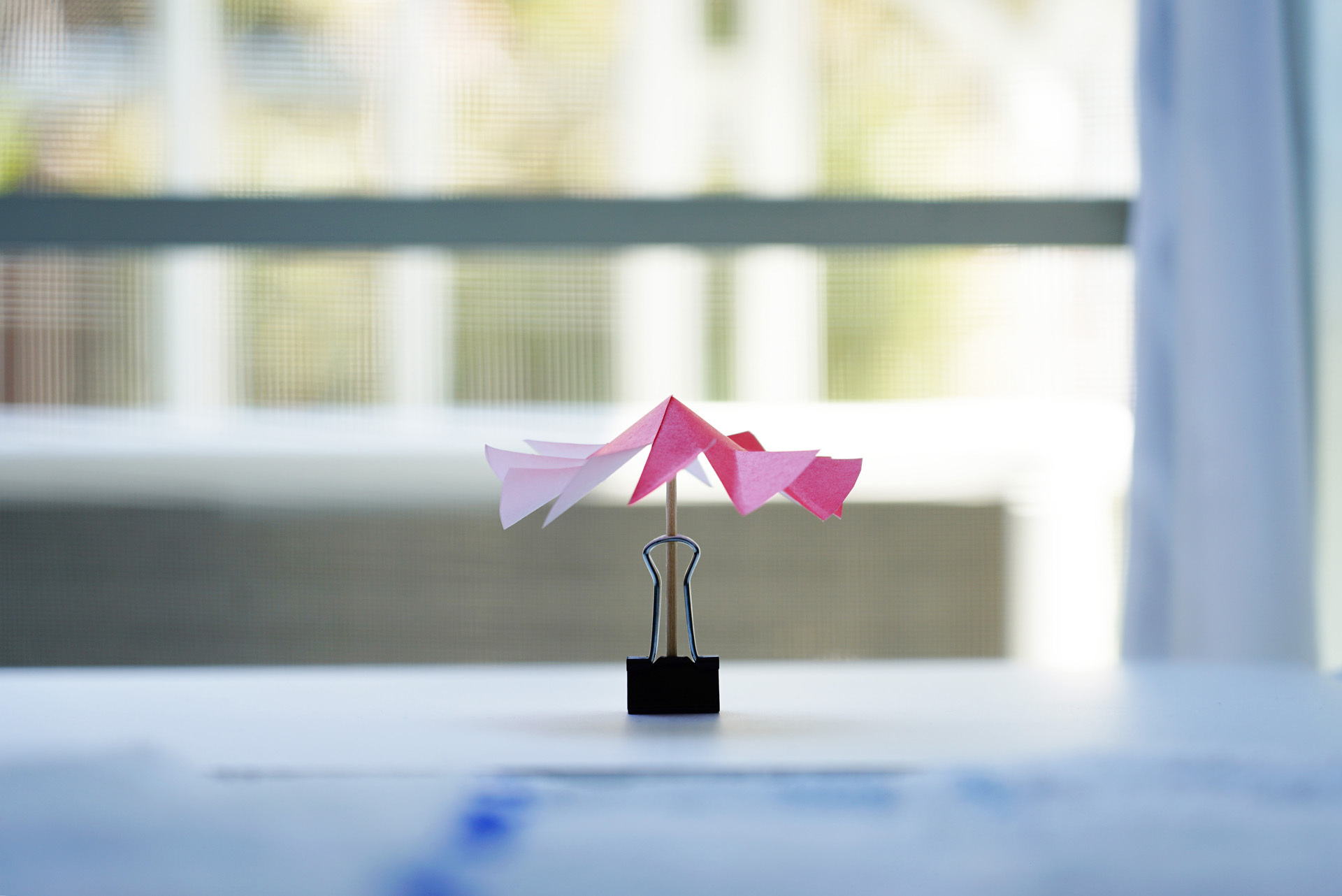In the AWRD creator interview series, we shine a spotlight on creators who are at the forefront of their fields, discussing their careers, sources of inspiration, and how they faced and overcame challenges and obstacles along the way.
In this installment, we feature tupera tupera, a creative duo known for their varied activities centered around picture books. As they celebrate their 21st anniversary, they reflect on their current exhibition alongside past projects while sharing their perspectives on living beings, including humans and animals, and their approach to creativity.
Photo credit: Yoshitsugu Fuminari
Humans Reacting to Animals: A New Perspective
ー You are currently holding the "You Too Are a Fun Creature! Exhibition" at Interactive Aquazoo NIFREL in Expo '70 Commemorative Park in Osaka. Can you tell us a bit about it?
tupera tupera's Tatsuya Kameyama (hereafter “Kameyama”): Until now, we've held exhibitions at various museums and galleries, but this is the first time we've done a planned exhibition at a facility that actually houses living creatures, like a zoo or aquarium.
Our connection with the Living Museum NIFREL began when they saw our "KAOTEN. of tupera tupera" exhibition at the Abeno Harukas Art Museum, which led to us holding the "You Too Are a Delightful Creature! Exhibition" at NIFREL.
For the "KAOTEN. of tupera tupera" Exhibition, we collaborated with the design team minna, and also collaborated with the NIFREL team from the planning stage. It was enjoyable to create the exhibition together in a friendly and cheerful atmosphere. Although it's work, we value the feeling of gathering like-minded friends and having fun together.
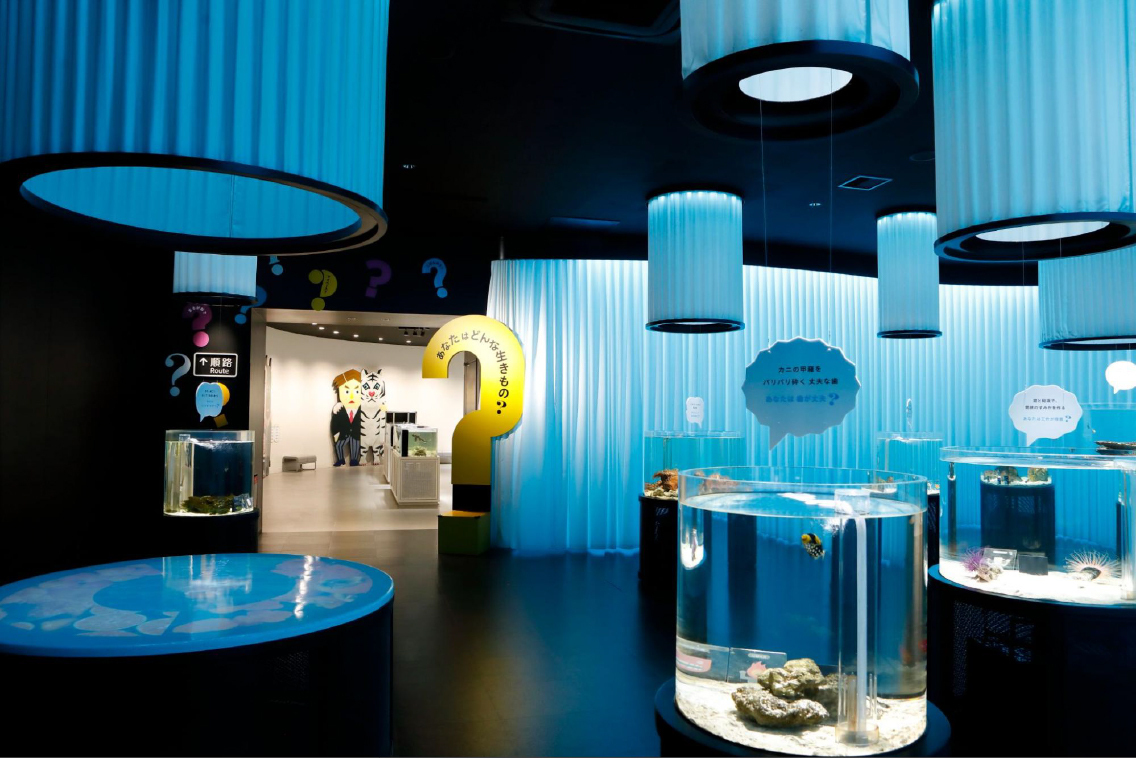
Image provided by: NIFREL
tupera tupera's Atsuko Nakagawa (hereafter “Nakagawa”): When I first visited NIFREL, Director Hiroshi Obata, entertainingly explained the everyday behaviors and personalities of various creatures, which I found very interesting.
Since we had the opportunity to work in such a unique space as NIFREL, I felt it would be a pity if our works were simply displayed there. From that thought, the concept evolved into creating something that actively interacts with the creatures. It became about presenting NIFREL from tupera tupera's perspective, showing how our unique viewpoint could reveal different aspects of the place.
Kameyama: Director Obata has a favorite creature called the "yodarekake(Four-fingered lipsucker)."

Image provided by: NIFREL
Nakagawa: The yodarekake has plump lower jaws and very large fins. Although they are fish, they don't like water and jump around.
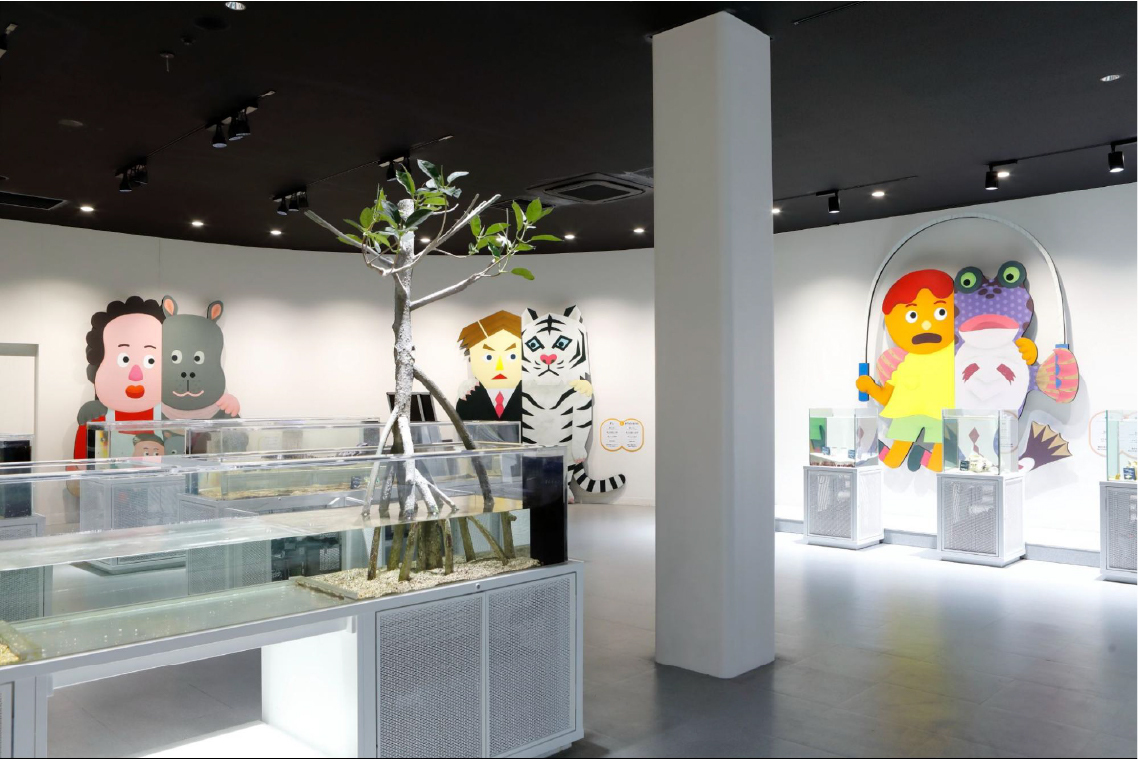
Image provided by: NIFREL
Kameyama: Director Obata, who enthusiastically guided us, was also glowing with excitement (laughs). Through him, I felt the individuality of the creatures even more strongly. People often think that tupera tupera loves animals because many of our picture books and works feature various animals, but that's not quite right. What we find fascinating is humans' reactions to animals. In fact, we actually have a bit of skepticism towards animals.
ー What kind of skepticism?
Kameyama: For example, our motivation for creating the picture book "Panda Sento" actually came from the whimsical idea that pandas might be pretending to be humans. In the wild, pandas only live in China, they're used in international diplomacy, and their black and white patterns seem a bit calculated. They feel somewhat suspicious as creatures (laughs).
But that's what makes them amusing. While other animals are ignored, pandas are adored and celebrated as cute, but if you look closely, they can also seem like middle-aged men in disguise.
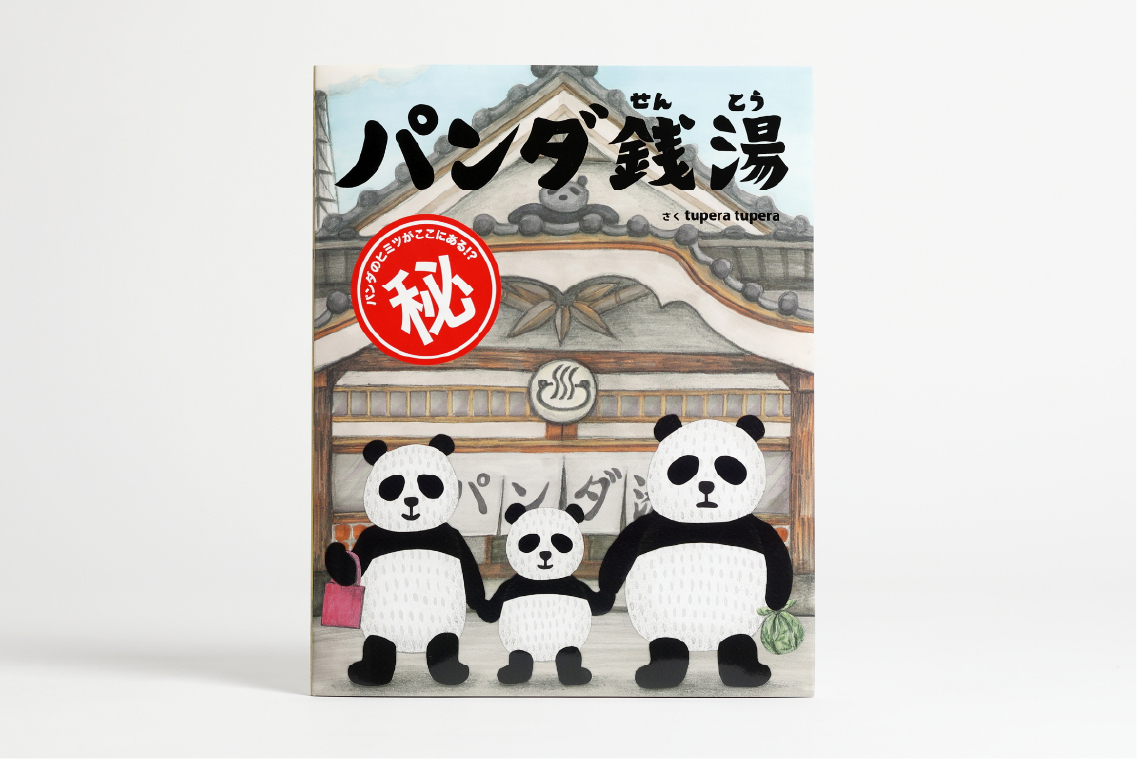
Nakagawa: The back of an adult panda really evokes a sense of melancholy, like that of an old man, doesn't it?
Kameyama: I can't help but look at animals from a slightly different angle. We enjoy animals while also valuing tupera tupera's unique perspective. That's how we've approached it.
We want people to experience various insights, rather than simply judge things as right or wrong.
ー Is meeting and collaborating with people from different fields also a common theme in tupera tupera's activities?
Nakagawa: Yes, that's right. We've collaborated with people from various industries, and one project that stands out in my mind is a recent collaboration with the Center for iPS Cell Research and Application (CiRA) at Kyoto University. Talking with experts from different fields opens up new worlds for us, and it’s very interesting..
Kameyama: This particular project was initiated by Kinuko Kasama, a research assistant at the time of production, and Associate Professor Jusaku Minari, who belong to the Uehiro Research Division for iPS Cell Ethics at CiRA. . They invited tupera tupera to participate, and our discussions quickly branched off in many directions, which was really fascinating.
Nakagawa: We were tasked with creating something that explored the connection between cells and ourselves. While science is constantly making new developments, like iPS cells, their social implications are often quickly judged as either right or wrong. The request was to create a piece that would stimulate wider societal discussion, not just among scientists and experts, before people made such binary judgments.
We were initially felt quite puzzled because it wasn't our area of expertise and we lacked the necessary knowledge. However, through our conversations with them, we realized that we could contribute by offering a perspective from someone without prior knowledge or interest in the field.
ー And the result was a flat piece that looked like a room, right?
Nakagawa: The original concept is to allow viewers to interpret the artwork freely without explanation. Also, to explain our thinking a bit, the entire area surrounded by the pink wall in the middle represents a cell. It’s important to note that cells have a membrane, in which the membrane doesn’t completely keep everything out. The cells allow the necessary substances to enter and expel unnecessary ones. In addition, in some cases, they are altered and modified or take up harmful substances.
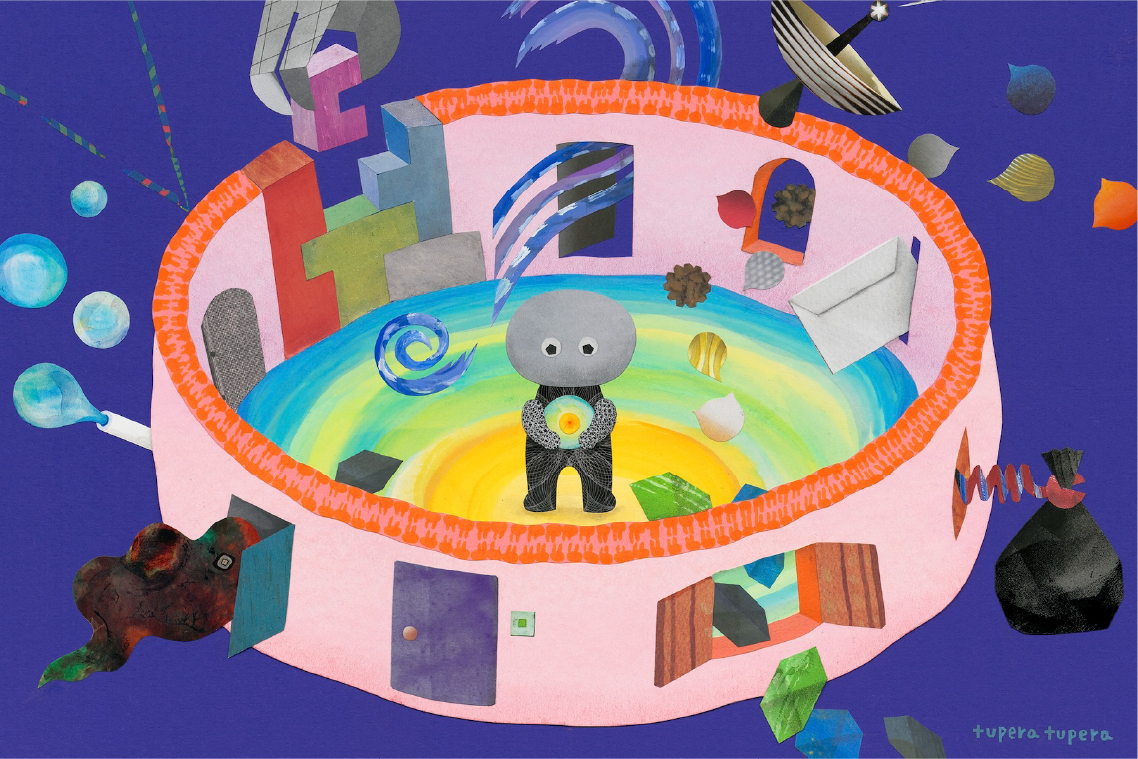
Nakagawa: As humans, we are made up of countless cells, and I felt that the mechanism of cells is much like that of humans themselves. Although we have walls to protect ourselves, it’s important not to close ourselves off completely but to let information and nutrients in and let harmful things out. Both consciously and unconsciously, we are constantly influenced by our environment and change accordingly.
In this process, we want to cherish the core part of ourselves, but is it okay to cling to it? What is the right answer? We’re always going back and forth. But it’s important to keep thinking about the hope and fear that come with scientific progress and the unknown, swaying between yes and no. These feelings are embedded in the background of this work.
Not being afraid to try many things is also a form of communication.
ー Just as there are participatory elements in the NIFREL exhibition, communication with the audience and collaborators is also an important aspect, isn't it?
Kameyama: Exactly. We consider picture books to be communication tools, something to be "used," and we hold this awareness strongly. Many of our books are designed not so much for just reading text, but for making people laugh or allowing them to interact in some way.
tupera tupera is now in its 21st year, but originally, we made fabric goods and products. We created items for people to use, like bags to carry around or T-shirts to wear, bringing them joy. This idea of making things for everyday use is something we intuitively apply to our picture books as well.
So, it's gratifying to see something we created with someone else become a part of people's lives. It's also incredibly satisfying when new people from different fields reach out after seeing our work, allowing us to expand our means of expression. In all this, communication remains the most important factor.

Nakagawa: Since we are a duo, communication is essential from the start. Without it, we can't make any progress. We're not very good at studying a specific field deeply, but instead of saying, "I'm not an expert, so I shouldn't go any further," we embrace the idea of trying various things without fear. I think that's also a form of communication.
Kameyama: The world is full of interesting things. Sampling and trying different things is the best.
Nakagawa: We enjoy ourselves, and then express what we find interesting from our unique perspective. If people who see our work become interested and take action, it creates a chain reaction. We hope that through our work, we can spark a chain of curiosity and engagement.
Rekindling the Joy of Adulthood: Bringing Out your Inner Child with "KAOTEN. of tupera tupera"
ー The "KAOTEN. of tupera tupera," which we discussed earlier, will have its final showcase at the Hachinohe Art Museum in July. Since its start in 2020, it's been quite a long-running project.
Kameyama: The exhibition started with a very memorable invitation from Daisuke Kusakari of the exhibition planning company Blue Sheep, who said, "Shall we invent an exhibition unlike any other?"
In popular exhibitions, sometimes it feels like you're there to see the crowd rather than the works. While people can be an obstacle in terms of appreciating the artwork, we wanted to create an exhibition where people could enjoy not just the art but also each other's faces.
So, we reached out to the filmmakers, photographers, and costume designers we've collaborated with before. We brainstormed numerous ideas under the theme of "faces," created the works, and even made a workbook.
The process of creating this exhibition together was almost like playing and was very enjoyable. However, just as the exhibition was about to start, the COVID-19 pandemic began…
Nakagawa: The exhibition was interactive, encouraging visitors to actively engage with the displays. At the time, there were many challenges and dilemmas regarding its opening. However, as the exhibition toured for an extended period, it gradually became possible for people to enjoy it more freely. Even though we had to deal with a lot of time where only half of people's faces were visible due to masks, I think presenting the theme of "faces" during this period offered a unique and interesting perspective. It was worth doing it.
Kameyama: At the Hachinohe Art Museum, we'll have a live creation event where we'll publicly create a folding screen themed around Aomori. Additionally, as a way to reflect on the four years of "KAOTEN. of tupera tupera", we'll host a talk show with Kusakari-san, who first came up with the idea, as a guest.
We'll also make it available online, so we hope that those who have visited the "KAOTEN. of tupera tupera" in various locations can watch and enjoy it too!
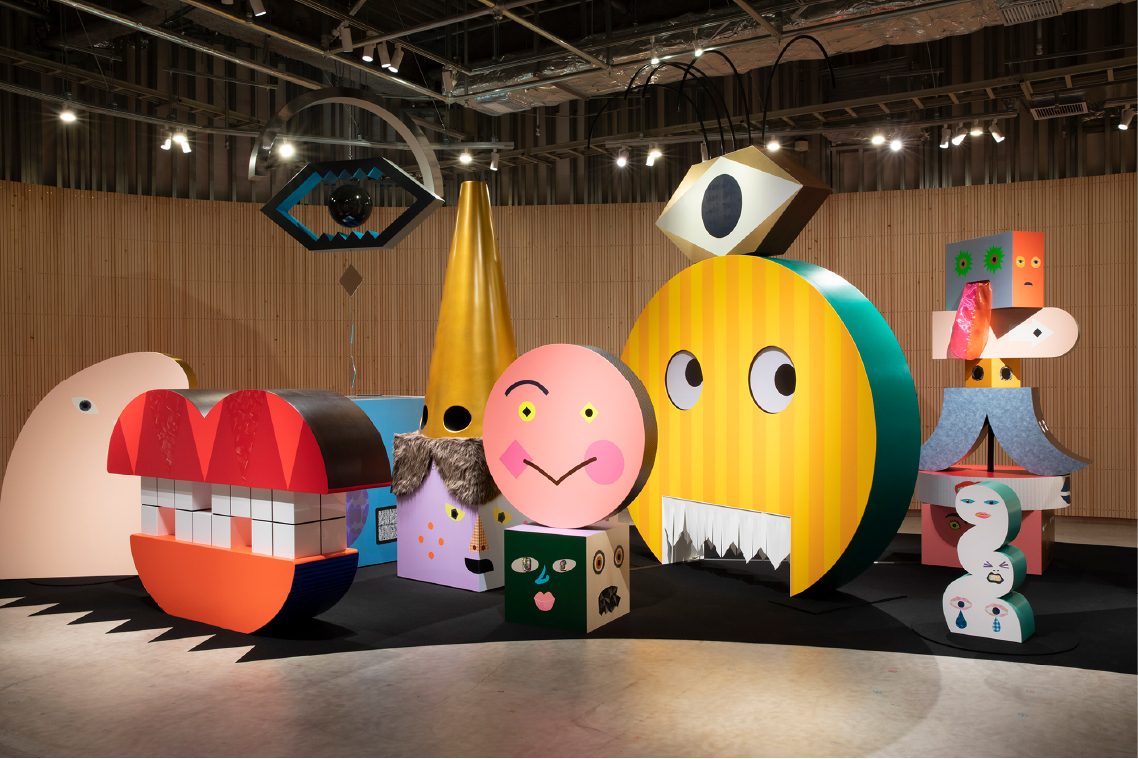
《KAO CHAOS》Photo credit: Fuminari Yoshitsugu
Nakagawa: I want a wide range of people to see this. Because we actively work on projects that can be enjoyed with picture books and families, what we do is often perceived as being for children, but that's not the case. Especially with the "KAOTEN.," we created it with the intention of attracting young people and adults.
Kameyama: Adults inherently retain a bit of their inner child. After all, everyone has been a child before (laughs). There are many energetic, fun-loving adults who blend their childlike and adult sides, and we've always enjoyed creating things alongside these kinds of people.
Nakagawa: It's incredibly gratifying to see adults having fun. Grandmothers, for instance, often really let loose.
Kameyama: Exactly. In our workshops, we sometimes see fathers who get more serious about creating something amazing than the kids do. They say, "I don't care about the kids! I'm going to make something incredible!" That's what makes it great.
Seeing adults who abandon their adult-like restraint and fully embrace their creativity and enjoyment is fascinating. I think it's one of the fundamental strengths of human nature.
Expanding through Repetition as the Result of 21 Years of Creating and Exhibiting
ー Thank you. Lastly, I'd like to ask about the significance of awards and competitions for you. What do awards (competitions) mean to tupera tupera?
Kameyama: In the 21 years since starting tupera tupera, I've never applied for anything myself. Conversely, when I was a student, there was a period when I entered competitions constantly for prize money or goods, and I once won 500,000 yen.
ー That's impressive!
Kameyama: I was planning to attend a camp to get my driver's license, so I used that 500,000 yen to upgrade the camp to Ishigaki Island (laughs). Participating in awards or competitions myself is a distant memory, but one of the most memorable awards tupera tupera received was the "Grand Prize of the 1st YANASE TAKASHI Cultural Award."
ー That's the award commemorating Mr. Yanase, who is known for creating "Anpanman."
Kameyama: It's an award given to people involved in various activities related to children, created from Mr. Yanase's desire to support such individuals. It was incredibly gratifying to have our overall activities, not just picture books but also workshops, evaluated and recognized.
Mr. Yanase was a true entertainer until the end of his life, always trying to bring joy to himself and the world through live performances and more. I've seen documentaries showing that he continued his activities until his last moments despite his illness. He lived a joyful life, and I would be happy if I could become an old man like him.
ー You resonate with him a lot, don't you?
Kameyama: I resonate with him completely. Of course, the times we lived in are different, so our experiences and memories of things like war are different, but fundamentally, I share his consciousness of creating things and making people happy with those creations, and his creative attitude.
Nakagawa: The popularity of Anpanman has made the character's image very strong, but the original Anpanman was quite serious. It conveys important messages about humanity, like the importance of eating and the painful sacrifice involved in helping others.
When addressing issues in the world, rather than delivering negative, fear-inducing messages, we also want to convey messages brightly, like saying, "Wouldn't this kind of future be great!"
ー Your shared dedicated towards craftsmanship seems to overcome time and connect Mr. Yanase to the two of you. Do you have any messages for young creators from tupera tupera?
Kameyama: This might stray a bit from the significance of awards (competitions), but rather than aiming to win awards, I believe it's important to make things every day, presenting your completed works, and having people resonate with them. This can lead to meeting like-minded people and taking the next step forward.
Nakagawa: Looking back, I think our 20 years have been a continuous cycle of creating and showing our work to others. When you show your work, you'll get some kind of response. It might include negative feedback, but you won't know until you put it out there, and it won't lead to new encounters until you do. Even at the smallest opportunities, if someone likes your work and reaches out, it means something.
Whether it's a competition, an exhibition, or even on social media these days, having a place to show and present your work is the starting point.
-
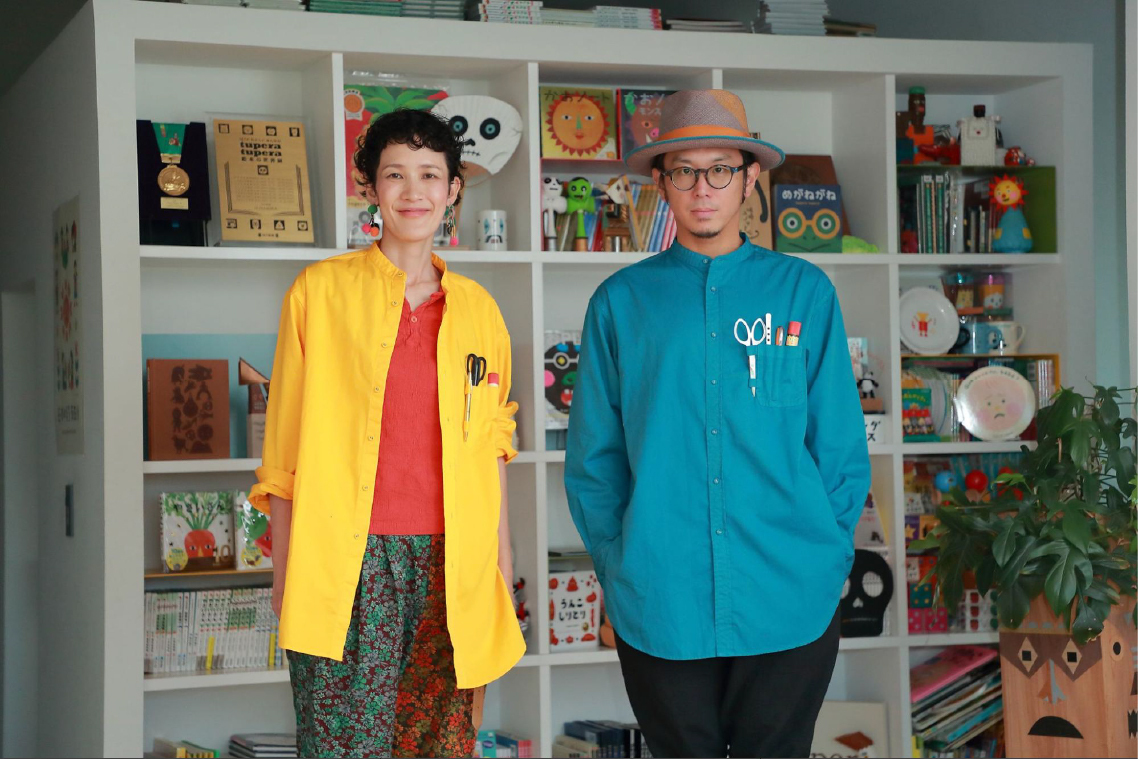
Profile: tupera tupera
tupera tupera is a creative duo consisting of Tatsuya Kameyama and Atsuko Nakagawa. They began their activities in 2002 and are involved in a wide range of fields including picture books, illustrations, crafts, workshops, and art direction. They have authored numerous books, many of which have been translated and published in various countries. They are also responsible for the art direction of the NHK E-Tele crafting show "Norsie Hirameki Workshop."
Kameyama and Nakagawa serve as visiting professors at several universities: Musashino Art University, specializing in Graphic Arts within the Department of Oil Painting; Osaka Shoin Women's University; and Kyoto University of the Arts, in the Department of Children's Arts. They received the Grand Prize of the 23rd Japan Picture Book Award for "Planet Cabbage Animal Encyclopedia" (Published by Alice-Kan) and the Grand Prize of the 1st Yanase Takashi Cultural Award in 2019.
http://www.tupera-tupera.com/
—
■ Event Information:
You Too Are a Fun Creature! Exhibition
Dates: March 6, 2024 (Wed) - January 13, 2025 (Mon, Holiday)
Venue: NIFREL
URL: https://www.nifrel.jp/cp/yukainaikimono/
KAOTEN. of tupera tupera
Dates: July 6, 2024 (Sat) - September 1, 2024 (Sun)
Venue: Hachinohe Art Museum
URL: https://hachinohe-art-museum.jp/exhibition/3244/
■ Exhibition Information:
Ambiguously Certain
Venue: Kyoto University iPS Cell Research Institute (CiRA) Main Building 1st Floor Gallery Space
URL: https://www.cira.kyoto-u.ac.jp/j/pressrelease/news/240216-100000.html
—
Written by: Taisuke Shimanuki
Edited by: AWRD

